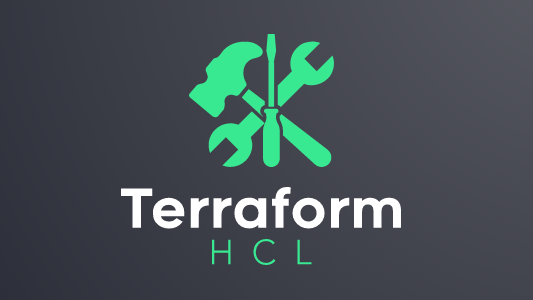In this post, we’ll review the basic Terraform building blocks from the previous post, Terraform HCL Intro 1: Resources, Variables, Outputs, and compare them to a “function”. This is a contrived analogy, but folks find it helpful. You’ll also learn about Terraform locals.
Terraform Review
Here’s a summary of the Terraform constructs we learned in the previous post in the context of a “function” definition.
- Variables: Input arguments to functions.
- Resources: Body definition. This includes resources declarations that tell Terraform what to create.
- Outputs: Return value of resources.
Here’s the example Terraform code:
variable "length" {
type = number
default = 2
}
resource "random_pet" "this" {
length = var.length
}
output "pet" {
value = random_pet.this
}
It results in:
$ terraform apply -auto-approve
Outputs:
pet = {
"id" = "yellow-unicorn"
"length" = 2
"separator" = "-"
}
$
Ruby Function Code Analogy
Theoretically, if the code was written in Ruby instead of Terraform, here’s what the analogous code could look like:
def terraform_apply(length)
pet = resource("random_pet", "this", length: length)
output("pet", pet)
end
def resource(type, name, attrs={})
resource_mock(type, name, attrs)
end
def output(name, value)
{name => value}
end
def resource_mock(type, name, attrs)
{
id: "yellow-unicorn", # mock
length: attrs[:length],
separator: "-",
}
end
Let’s break down the Ruby code and map it to Terraform.
- Variable: The “Terraform variable” is likened to the
lengthargument in a Ruby method definition. - Resource: The body of the Ruby method definition itself is like the “Terraform resource” declaration. In this case, we’re faking it and calling
resource_mockto “create” a resource and callingoutputto build the return value. - Output: The “Terraform output” is just the return value. It’s something like a Hash structure, IE:
{value: "yellow-unicorn"}.
Remember, we’re just using an analogy to help understand Terraform better. The Ruby code does not create resources. We’re mocking the behavior. Running terraform apply in the terminal would be like invoking the Ruby method like so:
out = terraform_apply(2)
puts "Outputs:"
puts out
The code is available for BoltOps Learn subscribers: 2-function-analogy/1-fake-function. It does a little extra formatting. Running it results in:
$ ruby main.rb
Outputs:
"pet" = {
"id" = "yellow-unicorn"
"length" = 2
"separator" = "-"
}
Analogizing Terraform components to a programming language like Ruby seem to help folks understand Terraform better.
Locals Introduction
If variables can be thought of as Ruby method arguments, then Terraform locals can be thought of as Ruby “local variables”. They’re only available within the function body. Here’s an example:
locals {
length = 2
}
resource "random_pet" "this" {
length = local.length
}
output "pet" {
value = random_pet.this
}
Here’s the analogous Ruby code.
def terraform_apply
length = 2 # local variable
pet = resource("random_pet", "this", length: length)
output("pet", pet)
end
See how the local variable is only available within the terraform_apply function body. Here’s the mimiced output again:
$ ruby main.rb
Outputs:
"pet" = {
"id" = "yellow-unicorn"
"length" = 2
"separator" = "-"
}
Summary
We used a simple function analogy to help understand how Terraform works. We just put a regular programming language spin on it. The metaphor can help folks understand Terraform better. We also learned about locals in this post. In the next post, we’ll cover conditionals: Terraform HCL Intro 3: Conditional Logic.
The source code for the examples is available for BoltOps Learn subscribers: terraform-hcl-tutorials/2-function-analogy
Want It to be Easier to Work with Terraform?
Check out Terraspace: The Terraform Framework.



